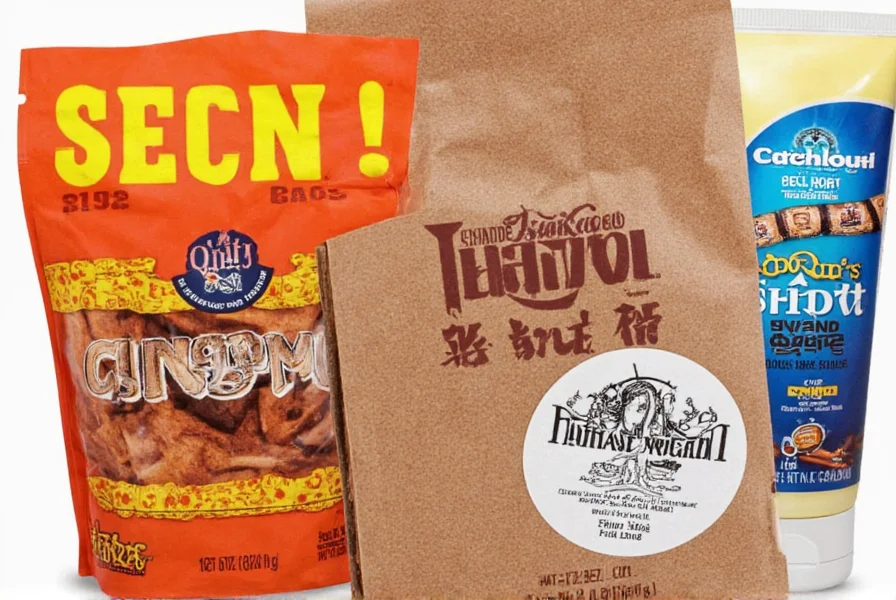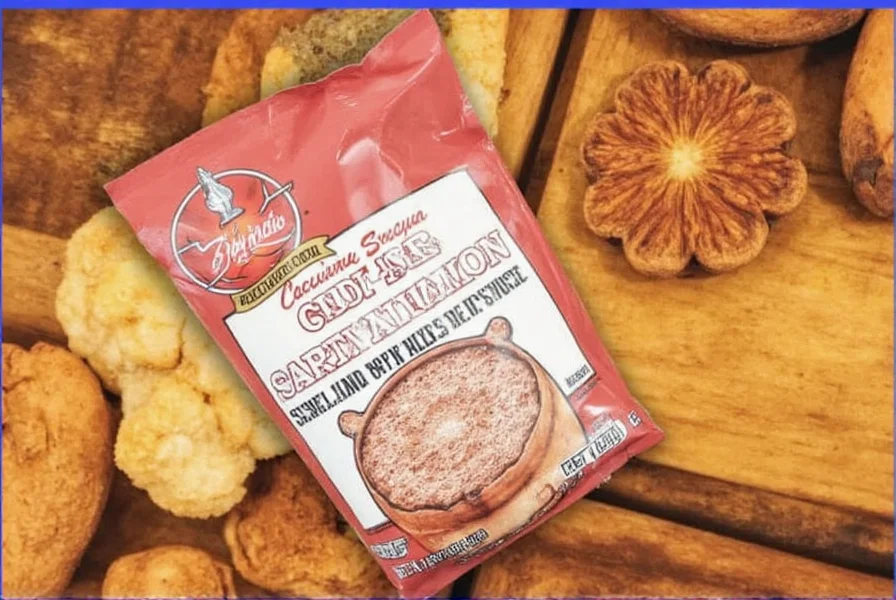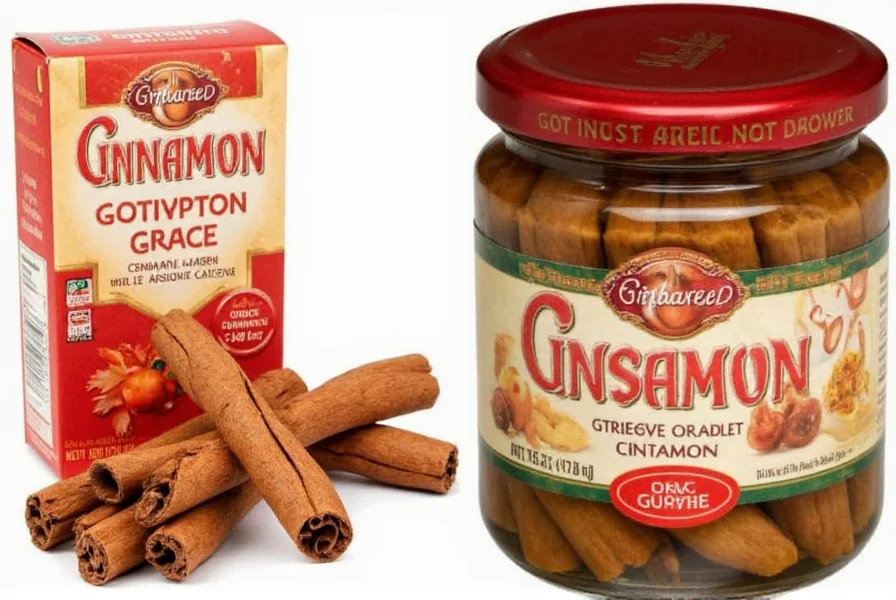As of late 2023 and continuing into 2024, multiple cinnamon brands have been recalled due to dangerous levels of lead contamination, primarily affecting apple cinnamon fruit puree products and ground cinnamon. The most significant recalls include WanaBana Apple Cinnamon Fruit Puree, Weis Quality Cinnamon,chno Cinnamon, Market District Cinnamon, Great Value Cinnamon (Walmart), and Member's Mark Cinnamon (Sam's Club). These products tested with lead levels up to 2.5 parts per million (ppm), far exceeding the FDA's 0.1 ppm limit for children's food. The contamination poses serious health risks, especially to infants and young children.
Recent cinnamon recalls represent a critical food safety issue that demands immediate consumer attention. Unlike typical product recalls, these involve dangerous contaminants that can cause irreversible health effects, particularly in vulnerable populations. The U.S. Food and Drug Administration (FDA) and Centers for Disease Control and Prevention (CDC) have issued urgent warnings about specific cinnamon products found to contain toxic levels of lead and, in some cases, salmonella bacteria.
Understanding which cinnamon brands are recalled and why they pose health risks is essential for protecting your family. This comprehensive guide provides verified information about current cinnamon recalls, helping you identify potentially dangerous products in your pantry and take appropriate action.
Understanding the Cinnamon Recall Crisis
The cinnamon recall situation emerged when routine testing revealed alarming levels of lead in various cinnamon-containing products, particularly those marketed to children. In February 2024, the FDA issued a consumer alert after discovering that certain apple cinnamon fruit puree products contained lead levels up to 2.5 ppm—25 times higher than the recommended limit for children's food. Subsequent investigations expanded the recall to include numerous ground cinnamon products from multiple retailers.

Complete List of Recalled Cinnamon Brands
Below is the most current list of cinnamon products subject to recall as verified by official FDA announcements:
| Brand Name | Product Description | Reason for Recall | Recall Date |
|---|---|---|---|
| WanaBana | Apple Cinnamon Fruit Puree Pouches (0.51 oz) | Lead contamination (2.5 ppm) | February 2024 |
| Weis Quality | Ground Cinnamon (2.31 oz) | Lead contamination (1.3 ppm) | March 2024 |
| chno | Apple Cinnamon Fruit Puree (0.51 oz) | Lead contamination (2.3 ppm) | February 2024 |
| Market District | Ground Cinnamon (2.12 oz) | Lead contamination (1.1 ppm) | March 2024 |
| Great Value | Ground Cinnamon (1.84 oz) | Lead contamination (0.9 ppm) | March 2024 |
| Member's Mark | Ground Cinnamon (2.12 oz) | Lead contamination (1.0 ppm) | March 2024 |
| Erewhon | Morning Nourish Organic Multigrain Cereal with Apple Cinnamon (8 oz) | Lead contamination | February 2024 |
Why Cinnamon Recalls Matter for Your Health
Lead exposure from recalled cinnamon products represents a serious health threat, particularly for children under six years old and pregnant women. Unlike many food contaminants, lead accumulates in the body over time and causes irreversible damage. The primary health concerns include:
- Neurological damage in developing children, leading to reduced IQ and learning disabilities
- Behavioral problems including attention deficits and hyperactivity
- Developmental delays in speech, motor skills, and cognitive abilities
- Anemia due to interference with hemoglobin production
- Kidney damage with prolonged exposure
The FDA considers any detectable lead in children's food a concern, but products exceeding 0.1 ppm require immediate action. Many recalled cinnamon products tested significantly higher, with some reaching 2.5 ppm—levels that can cause measurable harm after just limited exposure.
How to Identify Recalled Cinnamon Products
Checking your pantry for recalled cinnamon requires careful attention to product details. Simply looking for the brand name isn't sufficient, as only specific lots and package sizes are affected. Follow these steps to verify if your cinnamon products are part of the recall:
- Locate the lot number on the product packaging (typically printed near the expiration date)
- Visit the FDA's cinnamon recall page to check against the official list of affected lot numbers
- Examine packaging details including net weight, UPC codes, and specific product descriptions
- Check for physical characteristics like unusual color or texture that might indicate contamination
For apple cinnamon fruit puree products specifically marketed to children, the FDA recommends immediate disposal regardless of lot number if purchased before March 2024, as testing revealed widespread contamination issues in this product category.
What to Do If You Have Recalled Cinnamon Products
If you discover recalled cinnamon products in your home, take these immediate steps:
- Stop using the product immediately—do not consume or serve to children
- Securely dispose of the product in a covered trash container inaccessible to children and pets
- Contact your healthcare provider if you or your child consumed the product, especially for children under six
- Request a refund or replacement through the retailer where you purchased the product
- Report consumption to the FDA's MedWatch program to help track potential health impacts
For concerned parents, the CDC recommends blood lead level testing for children who consumed recalled apple cinnamon fruit puree products. Early detection can help mitigate long-term health effects through nutritional interventions and environmental controls.
How Regulatory Agencies Are Addressing the Issue
The FDA and CDC have implemented several measures to address the cinnamon recall crisis:
- Establishing an emergency testing protocol for imported cinnamon products
- Working with foreign governments to identify contamination sources in the supply chain
- Implementing enhanced border screening for cinnamon products entering the United States
- Creating a centralized reporting system for consumers to check product status
- Issuing health advisories to medical providers about symptoms to watch for
Industry experts believe the contamination likely originates in certain cinnamon-growing regions where environmental lead pollution affects soil quality. Unlike intentional adulteration, this represents an environmental contamination issue requiring systemic solutions throughout the supply chain.
Staying Informed About Future Cinnamon Recalls
Food safety alerts can change rapidly as new testing data becomes available. To stay current on cinnamon recall information:
- Sign up for FDA email alerts specifically for food safety notifications
- Follow the CDC's environmental health updates on heavy metal exposure
- Check product lot numbers before purchasing cinnamon products for children
- Consider using third-party verification apps that scan barcodes against recall databases
- Consult with pediatricians about safe alternatives to cinnamon-flavored products for young children

Safe Alternatives to Consider
While the recall situation continues, consumers seeking cinnamon flavor can consider these safer alternatives:
- Domestically sourced cinnamon from verified U.S. growers with transparent supply chains
- Certified organic cinnamon with documented heavy metal testing
- Alternative spices like nutmeg or allspice for flavoring
- Homemade fruit purees without added cinnamon for children
- Reputable specialty brands that publish third-party heavy metal testing results
When purchasing any cinnamon product, look for brands that provide Certificates of Analysis showing heavy metal testing results. Reputable companies increasingly make this information available to address consumer concerns following the widespread recalls.
Frequently Asked Questions
Which cinnamon brands are currently recalled for lead contamination?
As of 2024, recalled cinnamon brands include WanaBana Apple Cinnamon Fruit Puree, Weis Quality Cinnamon, chno Cinnamon, Market District Cinnamon, Great Value Cinnamon (Walmart), and Member's Mark Cinnamon (Sam's Club). These products were recalled due to lead levels exceeding the FDA's 0.1 ppm limit for children's food, with some testing as high as 2.5 ppm.
How can I check if my cinnamon product is part of the recall?
To check if your cinnamon is recalled, locate the lot number on the packaging and verify it against the FDA's official recall list. For apple cinnamon fruit purees marketed to children, the FDA recommends immediate disposal regardless of lot number if purchased before March 2024, as widespread contamination was found in this product category.
What are the health risks of consuming recalled cinnamon products?
Consuming recalled cinnamon products with lead contamination poses serious health risks, especially for children under six and pregnant women. Potential effects include neurological damage, developmental delays, behavioral problems, anemia, and kidney damage. The FDA considers any detectable lead in children's food a concern, but products exceeding 0.1 ppm require immediate action as they can cause measurable harm after limited exposure.
What should I do if I find recalled cinnamon in my pantry?
If you find recalled cinnamon products, stop using them immediately. Securely dispose of the product in a covered trash container inaccessible to children and pets. Contact your healthcare provider if you or your child consumed the product, especially for children under six. Request a refund or replacement through the retailer, and consider reporting consumption to the FDA's MedWatch program to help track potential health impacts.
How can I find safe cinnamon products after the recalls?
To find safe cinnamon products, look for brands that provide Certificates of Analysis showing heavy metal testing results. Consider domestically sourced cinnamon, certified organic options with transparent supply chains, or alternative spices like nutmeg. Sign up for FDA email alerts for food safety notifications and check product lot numbers before purchasing, especially for children's products.











 浙公网安备
33010002000092号
浙公网安备
33010002000092号 浙B2-20120091-4
浙B2-20120091-4